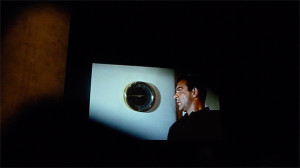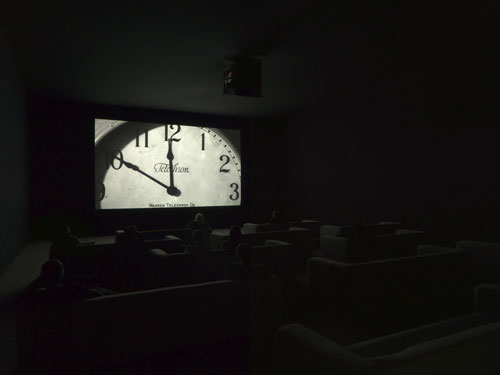
The Clock, as a title, carries multiple meanings. First and most obvious, the piece itself is a clock that you can use to tell the time. It’s a 24-hour movie digitally synchronized to local time. You know that it is time for lunch when the clock strikes twelve. But it’s also noon across film time. Each hour plays out over decades with clips ranging the whole of film history, from the silent era right up to the period just preceding The Clock‘s completion.
Additionally, the subject of most of the shots is a timepiece of some kind — shapes and sizes vary from a zoom-in to London’s Big Ben to the time-stamp on a piece of fictional surveillance footage to the hands moving on the face of a watch. The Clock is a clock made of shots of clocks, and even though we are watching time tick away, we can still feel the film medium’s elastic effects.
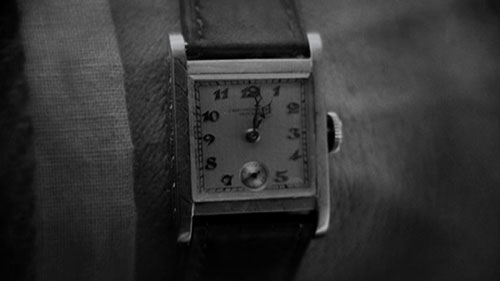
Most films work through the compression of a period of time — sometimes days or weeks, sometimes decades — that flow seamlessly by over the course of a couple hours. Scenes unfold in “real time” in front of our eyes, while the time between scenes magically disappears, unnoticed. Films carry us from time to time and move us from one location to another, erasing the time and trouble it takes to travel between scenes. Marclay’s movie makes us hyper aware of time unfolding onscreen and the time spent viewing, while still humorously and sometimes poetically putting to use the ineffable quality of film that allows us to accept jumping between different times and places in the blink of an eye. The Clock quickly time travels through eras and locations — an effervescent river of time.
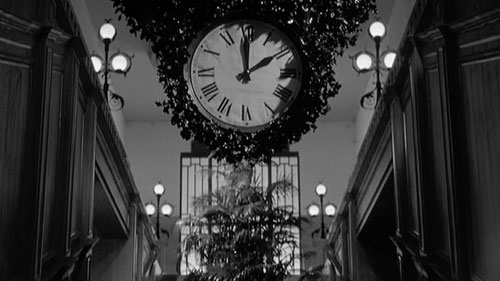
Early in one hour Meryl Streep arrives in one of her more recent roles, a mature woman. Later on, she shows up again much younger in one of her early films. Same with Anthony Hopkins who first arrives as the old butler in The Remains of the Day winding a clock or checking his watch. Later he is a young man in what looks like a bad TV movie. Through these brief appearances, Hopkins goes from being an established star backward in time to a struggling actor trying to catch a break. Streep goes from being the mature actress who has proven herself as one of the all-time greats and can now let her hair down and have some fun in a less serious role to the new girl onscreen just beginning to make her mark.
During any given passage we travel through screen history. The crackling image of an ancient clock from the silent era is followed by Dana Andrews and Vincent Price in Laura (1944), Sean Connery as James Bond (1960s), Roger Moore as Bond (1970s), Joan Crawford in What Ever Happened to Baby Jane? (1962), Leo McKern in The Day the Earth Caught Fire (1961), the clock stops for Max von Sydow in The Exorcist (1973), Run Lola runs across the screen (1998). Five minutes have passed. First a sundial from a historical costume drama, then a clock tower, then a digital watch. Robocop (1987). Some piece of time from the future — a time that hasn’t happened yet, but just went by. All times unfolding at the same time and then a poetic flight of film fancy. It begins to rain around 11:40am and the rain continues in various locations across the globe. And then the clock strikes twelve. High Noon (1952). Gary Cooper. Classic Hollywood. Time for lunch.
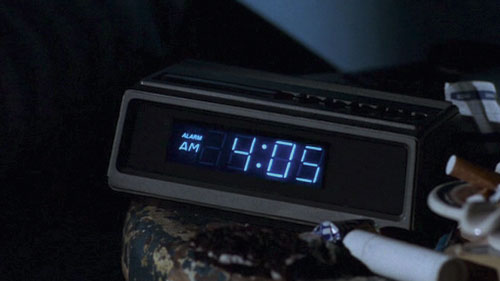
One imagines that different parts of day will have different rhythms. Will everyone start drinking at 5pm? Will they have dinner at eight? Does life get a lot spookier at midnight? Do inexplicable things happen around 2am? Will the rooster crow at dawn? Once you become enmeshed in The Clock, it is hard to extricate yourself. But eventually you must yield. I don’t want to tell you about The Clock even though I just did; I want to keep it to myself, which is an impossible wish. Like all films it is made to unfold in a shared group experience, and like all films it creates an incredibly personal experience in a group setting. Take the time to watch time go by.
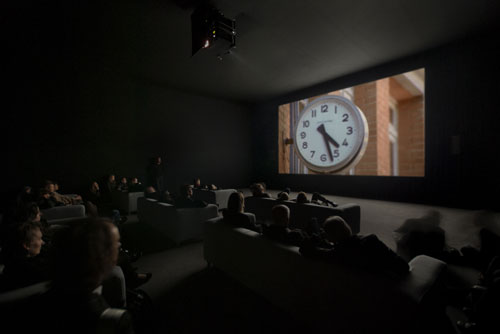
Christian Marclay’s The Clock runs April 6 through June 2, 2013 at SFMOMA, counting down the hours until the museum’s current era comes to an end. The museum will be open for 24 hours every Saturday in May, 2013. For more information visit sfmoma.org.
